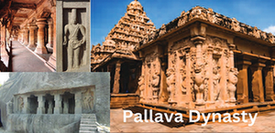Maratha Empire Rulers
Maratha Empire Rulers
Origin of the Maratha Empire:
The Marathas originated in the western Deccan plateau. Originating in the hills, they were known for their bravery and guerrilla tactics.The influence of the Bhakti movement led by spiritual leaders like Ramdas, Waman Pandit, Tukaram and Eknath increased religious and political unity among the Marathas.Chhatrapati Shivaji Maharaj played an important role in forging political unity among the Marathas.Under the Deccan Sultanates, the Marathas served in significant positions before establishing their own powerful state.Shahji Bhonsle and his son Chhatrapati Shivaji Maharaj established the Maratha kingdom.The Maratha Empire was established in the 17th century under the leadership of Shivaji.There was great rivalry between the Adil Shahi dynasty and the Mughals. Raigad was the capital of the Maratha kingdom .The Marathas played a major role in ending the Mughal rule.Bajirao I and his Peshwa successors took the Maratha Empire to its zenith in the early 18th century.The decline of the Maratha Empire began in the late 18th century. They were defeated by the British in the Third Anglo-Maratha War (1817-1818) and the empire was dissolved.
Maratha Empire Rulers :
| Ruler | Reign | Significant Achievements |
Chhatrapati Shivaji | 1674-1680 | Founder and first ruler of the Maratha Empire.Established himself as an independent ruler against the Mughal and Bijapur Sultanate.Instituted guerrilla warfare tactics known as “Ganimi Kava” (warfare) against larger enemies.Constructed numerous forts including Raigad, Pratapgad, and Sindhudurg.Implemented administrative reforms such as “Ashta Pradhan” (Council of Eight Ministers). |
Chhatrapati Sambhaji | 1681-1689 | Successfully ascended to the throne of the Maratha Empire after his father’s death.Signed treaties with foreign powers, such as the English, to secure weapons and resources for the Maratha army.Demonstrated strategic prowess and military leadership, notably in battles such as the Battle of Wai.Expanded the empire southward, defeated Portuguese and Mysore |
Rajaram and Tarabai | 1689-1707 | Rajaram succeeded Sambhaji as ruler of the Maratha Empire after his brother’s execution in 1689. He led the Marathas in a guerilla war against Aurangzeb’s forces.He shifted the capital from Raigad to Senchi and later Jinchi fort.Tarabai, Rajaram’s wife, played a significant role in guiding and supporting him during his reign, often acting as a regent in his absence.Under Rajaram’s leadership, the Marathas successfully defended their territories and inflicted heavy losses on the Mughal forces.Tarabai’s influence continued even after Rajaram’s death in 1700. |
Shahu I | 1707-1749 | Shahu I, born on 18 May 1682, was the fifth Chhatrapati of the Maratha Empire.Shahu was detained by Mughal emperor Aurangzeb during the siege of Raigad when he was young and taken prisoner by the Mughals.Shahu won the bloody battle of Kheth and was later crowned as Chhatrapati. Shahu died on December 15, 1749. |
Peshwa Balaji Vishwanath | 1718-1720 | Balaji Vishwanath Bhatt was the first hereditary Peshwa from the Bhatt family.Along with Shahu, Balaji Vishwanath assisted the Sayyid brothers in deposing the Mughal emperor Farooq Siyar in 1719 CE.His son, Bajirao I, succeeded him as Peshwa and further expanded the Maratha Empire. |
Peshwa Bajirao I | 1720-1740 | Balaji Vishwanath’s eldest son became Peshwa at the age of twenty.Bajirao rescued the Bandela ruler Chatrasal from the Mughal siege in Bandelkhand.In 1722 AD, he captured Salsette and Bassein from the Portuguese.In 1728 AD, he shifted the administrative capital from Satara to Pune.In 1731 he defeated a rebel named Trimbak Rao Thapade in the Battle of Tapoi.Bajirao played an important role in the Maratha attack on Delhi in 1737. |
Peshwa Balaji Baji Rao | 1740-1761 | In 1752 AD, the Peshwa entered into an agreement with the Mughal Emperor.The boundaries of the Maratha Empire expanded under his rule to include areas like Peshawar, Srirangapatna and Medinipur.He undertook significant infrastructure projects throughout the empire, including the construction of canals, bridges, temples and lodges.Marathas fought bravely in the Third Battle of Panipat when Ahmad Shah Abdali invaded India. However, Balaji Baji Rao also died hearing the tragic end of the war. |
Peshwa Madhavrao I | 1761-1772 | Achieved significant victories, expanded empire further, but faced internal divisionsMadhav Rao (1761 – 1772 CE)who restored the lost territories of the Maratha empire.Madhavrao I’s tenure is often referred to as the “Maratha Resurrection” due to the resurgence of the Maratha Confederacy during his rule.reasserted control over northern India by defeating the Rohillas and subjugating the Rajput states and Jat chiefs. |
Peshwa Narayana Rao | 1772-1773 | Narayanrao, born on August 10, 1755, served as the 10th Peshwa of the Maratha Confederacy.He assumed the position in November 1772 and He was murdered on the orders of Raghunath Rao 1773 CE. |
Peshwa Raghunathrao | 1773-1774 | Brief reign marred by internal struggles and external threats.1772 – 1773 CE at There ensued a struggle for power between Raghunath Rao and Narayan Rao .He seized the throne but was overthrown by the emperor. |
Peshwa Madhavrao II | 1774-1795 | He was the son of Narayan Rao, who was just 40 days old when crowned as the Peshwa. Raghunath Rao sought British assistance, leading to the First Anglo-Maratha War (1775 – 1782).Nana Phadnavis achieved victory for the Marathas at the Battle of Talegaon (1776) . Ruled during a period of decline, lost territory to British and other powers |
Peshwa Bajirao II | 1796-1818 | Faced multiple defeats against British, ultimately lost control of the empire |



You have observed very interesting points! ps nice website.Raise your business